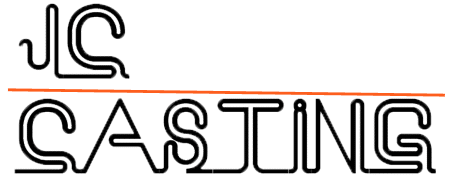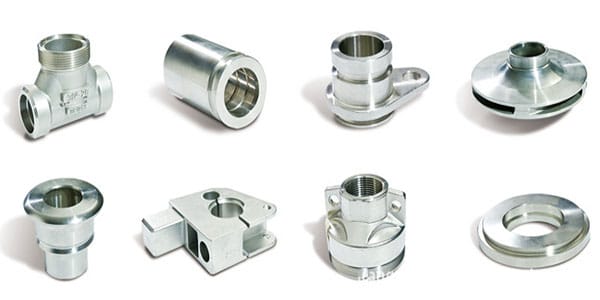Advantages of 3D Printing for Investment Casting
Currently,3D printing manufacturing technology is the focus of attention in the molding process. Can it be used in the precision casting industry?The advantages of 3d printed investment casting are unmatched by traditional industries.For traditional manufacturing,the more complex the object shape, the higher the manufacturing cost.The technical requirements for worker are high. The waste of metal processing is amazing. Not only resources wasted, but also environmental pollution.But 3D printing solves the situation that some complex parts can’t be processed in the traditional industry. It reduces the cost and eliminates the waste of resources. 3D printing technology can provide the wax mold and the disappearable investment mold required for precision casting.It solves some problems of complex components. Such as the long preparation period, large investment and difficult production of wax mold or wood mold in traditional casting, curved surfaces.
Precision casting is a casting process compared to the traditional sand casting process. It refers to the general term for the process of obtaining precision-sized castings. Due to the more precise size of the casting and the better surface finish, its products are precise, complex and close to the net shape of the part. It can be used directly without machining or processing. It is an advanced process of near net shape. It is widely used in the manufacturing industry. Investment casting is also known as lost wax casting. Including: investment casting, ceramic casting, metal casting, pressure casting, lost foam casting. As additive manufacturing materials, how does 3D printing be used in the traditional precision casting industry?
Let us introduce the application and advantages of 3D printing services in the foundry industry.
Applications of 3D Printing Technology in Investment Casting
1.Precision casting
3D printing and investment casting are complementary. They are suitable for the manufacture of complex shaped parts. If there is no rapid automatic forming, the production of mold is the bottleneck process of precision casting.However, without precision casting, the application of rapid automatic forming will have great limitations.
The application of 3d printing in investment casting can be classified into three types.The first is the disappearing molded part (mold) process. It is used for small batch production. The second is direct shell method for small quantity production. The third is fast wax and Mold making for mass production.
2.Rapid casting
Rapid casting is one of the most attractive methods for replicating metal parts using 3D prints as master or transition molds. This is because the casting process can produce parts of complex shapes. Directly making 3d printing wax for investment casting, the rapid casting process eliminates the need to open molds, thus greatly saving manufacturing cycle and cost. 3d printing investment casting molds for 3 days, casting for 10 days. The entire trial production task was 5 months in advance.
3D printing investment casting has unique advantages comparing with traditional methods
First. The cycle and cost of manufacturing complex parts, blank molds are greatly reduced. When using mechanical materials to form mechanical parts, it is no longer necessary to design and manufacture blank forming molds.
Second. The realization of the near net shape of the blank. The machining allowance is greatly reduced. It avoids the waste of materials, reduces the energy consumption. It is conducive to environmental protection and sustainable development.
Third. Due to the greatly reduced time and cost of process preparation, the cycle and cost of single-piece trial production and small batch production are greatly reduced. Especially suitable for new products.
Fourth:Breaking the barrier between design and manufacturing. 3D printing requires only 3D data files for integrated molding. The entire manufacturing process is digitized. The final rendering of the parts can be seen through 3D data without manufacturing. The data can be directly modified or optimized online. It alleviates the process of repeated manufacturing and optimization of complex structural parts.
Fifth:Realize the ductility of materials. 3D printing can achieve precision casting with more materials. Some traditional methods are difficult to process materials. Such as gradient material parts, non-single material parts. More new materials can be added to improve material use. Extensibility in precision casting. Some difficult-to-implement parts structures can be directly implemented by 3D printing.
Sixth:Eliminating the need to manufacture molds, time and cost investment is greatly reduced. In the traditional process, when the precision casting is required, it is necessary to manufacture the blank mold in advance. It requires a lot of capital investment and time investment. If the part structure is complicated, the conventional process cannot be realized at all. While 3D printing is directly integrated into the mechanical parts, it is directly printed by three-dimensional data. It is not necessary to manufacture the blank mold first. This integral molding is not affected by the complexity.
Seventh:As we all know, 3D printing is a material additive manufacturing method. The advantage of additive manufacturing is that there is almost no margin for machining. It avoids waste of materials, and in the context of sustainable development and environmental protection, the society for manufacturing development. The impact of meaning is more profound.
Eighth:Small batch manufacturing advantages are reflected.
No need to open the mold, the preparation time of precision casting is greatly shortened. The waste of material of almost zero makes the cost of precision casting greatly reduced. For single-piece trial production and small batch production, this means that the production cycle and cost are greatly reduced. Then 3D Printing has great advantages in the development of new products and in the production of individualized small-volume parts.
Ninth:It can be combined with traditional precision casting technology to give full play to its advantages and achieve more possibilities for precision casting.
3D printing is a material additive manufacturing method. One of the biggest features is the accumulation of corresponding materials by light curing or laser melting. As long as there is a three-dimensional data, it can deposit any physical parts needed. The process does not require molds. Even parts with very complex structures can be molded in a range of sizes. This feature greatly enhances the boundary extension of manufacturing.

